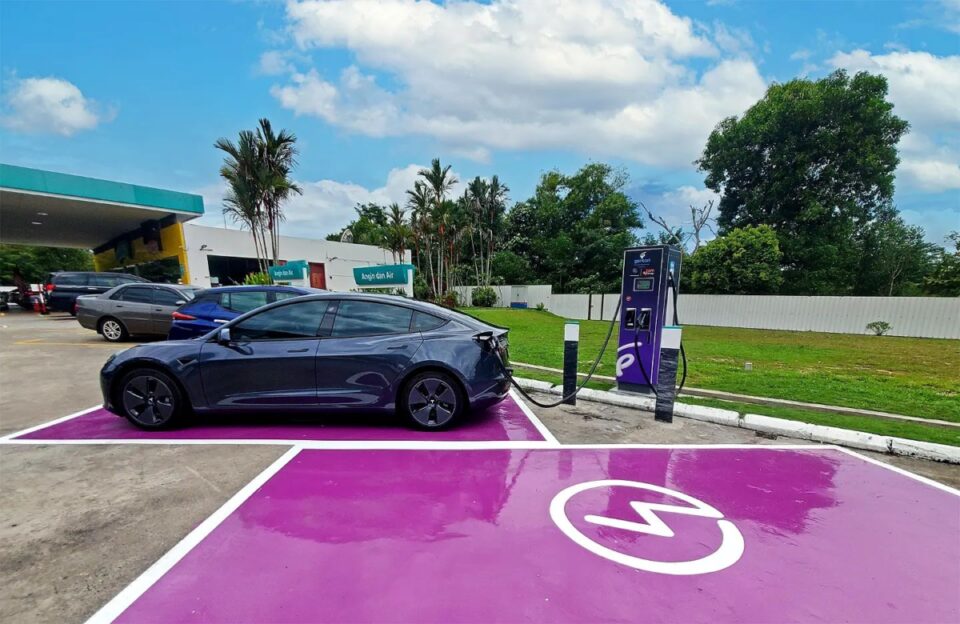KUALA LUMPUR, Dec 10 — The year 2023 saw Malaysia elevate its commitment towards an inclusive and sustainable public transportation service, which augurs well with the newly launched National Energy Transition Roadmap (NETR) that emphasises clean energy.
NETR identifies six energy transition levers to help Malaysia transition to clean energy, including promoting the use of electric vehicles (EVs) and raising the public transport modal share.
One of the most notable projects in this regard is the initiative by Prasarana Malaysia Bhd, which has proposed the procurement of 150 electric buses and the construction of three bus depots at an estimated cost of RM600 million to support the LRT3 project.
The Kuala Lumpur City Hall possesses about 80 electric buses, all supplied by the Malaysian manufacturer SKSBUS Malaysia, and has 18 charging stations at its Sentul depot.
Meanwhile, Rapid Bus operates around 15 electric buses, catering to the Sunway Bus Rapid Transit (BRT) and Klang Valley routes, and maintains a total of 14 charging stations at its depot.
EV promotion well underway
Under NETR, the aim is to ensure the public transport modal share shifts to 40 per cent by 2040 and 60 per cent by 2050. The roadmap will see the penetration of both two- and four-wheeled electrified vehicles in the country, with a 50 per cent target for these by 2040, as outlined by the Low Carbon Mobility Blueprint and National Energy Policy.
By 2050, two-wheeled and four-wheeled EVs are expected to account for 80 per cent of industry volume in their respective categories.
Associate Professor Dr Wan Mazlina Wan Mohamed from Universiti Teknologi MARA (UiTM) and the Malaysia Institute of Transport (MiTRANS) said the effort to promote EVs in general and public transportation in specific is well underway in Malaysia.
“Swedish companies such as Volvo and ABB have been collaborating with industry stakeholders to promote the use of electric vehicles, including electric buses, since 2010.
“These initiatives contribute to the broader goal of improving public transport and addressing the diverse needs and perceptions of passengers,” she said.
The government has also introduced various measures in Budget 2024, including the Electric Motorcycle Use Promotion Scheme that offers a rebate of up to RM2,400 for the purchase of electric motorcycles.
She also commended the government’s move to introduce 11 new transportation and coordination initiatives such as BRT systems for inner-city buses, including in Johor Bahru and the Klang Valley.
Conducive environment
Wan Mazlina said besides vehicle procurement, there should also be sufficient infrastructure to realise the effort for sustainable transportation.
“Operators and the government must consider numerous factors simultaneously, including the availability of charging stations at strategic locations to support electric bus operations.
“Other factors should also be considered, such as ridership demand for public transportation, the geographic reach of service areas, and the capital required for establishing charging infrastructure,” she said.
There are five archetypal use cases of EV charging infrastructure, namely home, workplace, depot, (semi) public destination, and public enroute, which can be grouped as public and private charging stations.
In the first phase of NETR, the plan is to implement an EV charging stations catalytic project, backed by the Ministry of Investment, Trade and Industry in collaboration with government linked companies and private sector players. It aims to install 10,000 EV charging stations across the nation by 2025.
“There is also a significant disparity in purchase costs between electric buses (ranging from RM1.1 million to more than RM2 million per bus) and fossil fuel buses (which can cost RM600,000 to RM900,000 per bus), electricity tariffs, and various other infrastructure-related expenses,” she said.
The geographical terrain and weather conditions also need to be taken into consideration, she said.
“Well-maintained flood-free roads are essential for the efficient operation of electric buses. Electric buses can face operational challenges during floods or excessive wet weather conditions due to the risk of breakdowns and damage to the electrical infrastructure and charging systems,” said Wan Mazlina.
In addition, she highlighted the importance of focusing not only on the initial vehicle investment but also on ongoing maintenance, fleet reliability, and aftermarket support.
Hence, the efforts must encompass infrastructure development, technological advancements, addressing public perceptions, ensuring affordability, and prioritising safety and accessibility, she said.
“The commitment to continuous improvement and responsiveness to public feedback are key factors to propel Malaysia towards a more robust and inclusive transportation landscape,” she added.
–— Bernama





